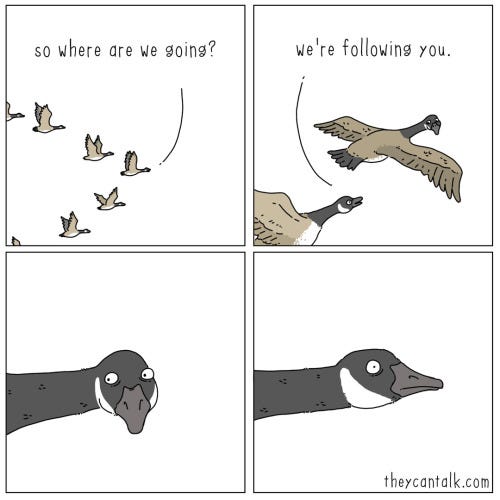The concept of “nudging” has transformed how behavioral science is applied outside of academia. It refers to the art of crafting a person’s decision-making environment so that they’re subtly biased toward one decision over another. Businesses love it because they can quickly and cheaply attract more customers. And governments love it because they can encourage people to act in desirable ways without necessarily changing laws or restricting freedoms.
Nudges are now ubiquitous enough that you probably experience them all the time. For example, one common technique relates to social proof. When you visit a website to look for a product or service, you might notice a message that says something like “53 people are currently looking at this product!” or “16 people purchased this in the last week!”. These messages stimulate an urge to fit in and they instill a fear of missing out on what others are enjoying. They’re simple nudges based on the knowledge that social influence is powerful enough to drive people’s decision-making.
Surprisingly though, despite the widespread practice of nudging, the science on its effectiveness is still limited. Questions like “Does nudging work?” are too simplistic because there are so many different types of nudge. Some types are likely to work well while others aren’t, and it’s important to know which is which.
Any real attempt to understand the efficacy of nudging needs to break the concept down into more specific categories and analyze each of them individually. Thankfully, a new study has done exactly that.

📣 How to influence decision-making
When you search through scientific literature, it’s easy to find individual studies to support practically any reasonable theory. This kind of cherry-picking is a problem because it can mislead you into thinking a particular idea is backed by solid evidence when it’s only backed by one outlier study. Ideally, you need to find a meta-analysis, which combines and analyzes all of the widespread evidence on a particular question to reach an overall conclusion.
A study published in January 2022 applied this meta-analysis approach to research on nudging. The researchers pulled together data from over 200 relevant studies and a total of over 2 million participants.
The overall data showed that nudging did significantly change people’s behavior. But as I mentioned before, this kind of general insight isn’t as useful as researching the individual effects of specific types of nudge. So the researchers broke down nudging into three specific subtypes:
Decision information: This kind of nudge presents people with new or enhanced information to support a particular decision. For example, if you want people to eat healthier, you might develop more intuitive and prominent nutrition labels on food packaging that help people find the healthiest options.
Decision structure: This type of nudge changes how decision options are constructed or how they appear to people. For example, putting candy at the store checkout counter gives people less time to think about health tradeoffs as they impulsively grab a chocolate bar. And making organ donation an opt-out rather than opt-in policy boosts how many people agree to becoming organ donors. You can change people’s decisions by changing how a particular option looks next to alternative options.
Decision assistance: Even when a decision is already made, people often struggle with the effort, self-control, or sacrifice required to fulfill it (as my previous newsletter on New Year’s resolutions discussed). This is where assistance nudges help by making it easier for people to follow through on their intentions. For example, when people decide they want to donate to a charity, the charity can ask them for an automatic monthly payment. That way, donors don’t need to reconsider how much they want to donate each month, and the charity is less vulnerable to fluctuating feelings of generosity.
The categories aren’t perfect. There’s probably some overlap between them and you could also split them into more specific and detailed categories. But they’re a good place to start.
When analyzing the categories separately, the researchers found that all three had at least some significant impact on behavioral outcomes. But a direct comparison revealed that the best-performing nudges were the decision structure interventions. Decision information and decision assistance nudges both had a smaller impact.
To be clear, this doesn’t mean you should never use information or assistance in nudging people’s decisions. In situations where people lack the right information, providing the right information should be the priority. However, we now have good evidence that when a situation calls for any of the three types of nudge, decision structure interventions are likely to perform best.
“Nudge” is an attractive and intuitive term that has helped to spread the word on the power of behavioral science, but it’s absurdly generic. These meta-analysis results improve how we define and analyze the techniques that change behavior. People’s problems, motivations, and perceptions differ enormously between scenarios, and there’s no one-size-fits-all nudge.
There are some good toolkits out there that help decision-makers find the best behavioral interventions for their needs. Deep and nuanced analyses of nudging are growing in number, and they’re proving that some types of nudge are better than others.
⭐️ Takeaway tips
Nudges are everywhere: It might seem like this newsletter is only relevant to academics or leaders in business and government. But as I mentioned in the intro, the influence of behavioral science interventions is rapidly spreading across society. A better awareness of how organizations are manipulating your behavior is likely to be useful. You can also improve your own persuasion skills and learn to nudge yourself toward better habits and healthier lifestyles.
Behavioral science at work: Most industries today are making good use of insights from behavioral science. In fact, marketers and advertisers were applying a crude form of nudging long before it became a big deal within the sciences. If you work in any business that depends on interacting with people, think about how the three types of nudge above apply to your work. You might come up with some new, productive ideas.
Focus on decision structure: Focusing on the structure of people’s decisions is the most effective nudge category. My favorite example of a decision structure intervention comes from the “decoy effect”. As the BBC explains here, people’s decisions are impacted by irrelevant decoys. For example, imagine choosing between these two travel options, A and B:
A) $400 flight with a 60-min stopover
B) $330 flight with a 150-min stopover
People are more likely to choose A rather than B when you introduce a decoy option C that offers a $435 flight with a 60-min stopover, because C makes A look so good (i.e. A is cheaper than C with the same stopover time). But when the decoy is a $330 flight with a 195-min stopover, preferences suddenly switch to option B rather than A, because C now makes B look good (i.e. B is the same price as C with a shorter stopover). There’s no reason that C should change people’s preferences between A and B, but we inevitably use contextual shortcuts in our decision-making.
💡 A final quote
“Not brute force but only persuasion and faith are the kings of this world.”
~ Thomas Carlyle
❤️ If you enjoyed this, please share it with a few friends. If you’re new here, sign up below or visit erman.substack.com
📬 I love to hear from readers. Reach out any time with comments or questions.
👋 Until next time,
Erman Misirlisoy, PhD



